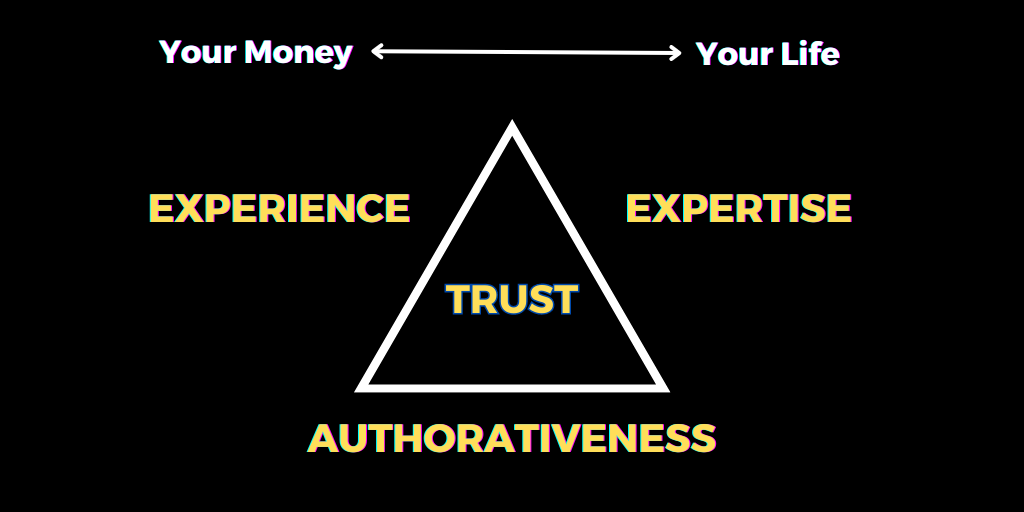Why AI Prompts Fail (and What to Do About It)
Suppose you’ve experimented with AI tools like ChatGPT, Perplexity, or Claude for your practice. In that case, you’ve probably experienced this frustrating cycle: you craft what seems like a clear request, hit enter, and receive something that’s… almost useful.
The content might be well-written but too lengthy for your newsletter. Or perfectly formatted but missing the key legal disclaimers you needed. Perhaps it captures the right tone but ignores the specific structure that makes your client communications effective.
You find yourself spending as much time editing the AI’s output as you would have writing it yourself—which defeats the entire purpose of using AI in the first place.
This happens because AI models excel at generating content, but they’re not naturally disciplined about following specific structural requirements—unless you explicitly teach them to be. Think of it like working with a brilliant associate who needs clear, detailed instructions to deliver exactly what you need for each client matter.
That’s where Structured Directive Enforcement (SDE) becomes invaluable. It’s essentially a framework for giving AI tools the kind of precise, unambiguous instructions that ensure consistent, usable results every time.
For law firms handling sensitive client communications, compliance documentation, or educational content, this level of control isn’t just helpful—it’s essential. When you can’t afford ambiguity in your output, structured prompt engineering for law firms becomes a practice management tool, not just a content creation shortcut.
What Is Structured Directive Enforcement (SDE)?
Understanding structured prompt engineering for legal workflows
SDE is a prompt design methodology where you provide AI tools with specific, enforceable instructions about structure, format, and required elements—often using visual markers, section labels, or logical frameworks within your prompt.
Rather than hoping the AI intuits what you want, you explicitly define the parameters for success. For example:
<task>Write weekly estate planning update</task>
<action>Include exactly 3 news items with bullet summaries</action>
<goal>Educate clients and position firm as a thought leader</goal>
<format>Professional newsletter tone, 200-300 words total</format>
This approach builds on Structured Layout Engineering (SLE), which our SLE Prompt Patterns guide defines as “a prompt design strategy that uses layout logic, component tagging, and visual formatting to guide AI outputs.”
While SLE focuses primarily on visual arrangements—infographics, multi-column layouts, or structured reports—SDE expands this methodology to encompass any type of directive: content workflows, legal checklists, client communication templates, or compliance documentation.
The key insight is this: when you treat AI like a skilled paralegal who needs clear instructions rather than a magic solution that reads your mind, you get dramatically better results.
By enforcing component-based scaffolding in the prompt, the model's reliability jumped dramatically.
Lakera AI Tweet
The Common Problems SDE Solves
Why your AI outputs are generic, flat, or incomplete
Rambling or Missing Key Points
Without structural anchors like section headers or required components, AI often improvises organization and may skip critical elements your legal content requires. SDE creates mandatory checkpoints that ensure nothing essential gets overlooked.
Time-Consuming Revision Cycles
When AI delivers content in an unpredictable format, you spend valuable time restructuring rather than refining. A well-designed SDE prompt produces outputs that need minimal editing, freeing you to focus on substantive improvements rather than basic organization.
Inconsistent Team Results
n multi-attorney practices, different team members using the same AI tool often get wildly different (or outright incorrect) outputs for similar tasks. Structured prompts can be documented, shared, and refined collectively, ensuring everyone achieves consistent quality regardless of their AI experience level.
As one legal technology researcher noted: “By enforcing component-based scaffolding… the model’s reliability jumped dramatically.”
Think of it like standardizing your intake forms or client interview processes. Just as you wouldn’t let each attorney create their own approach to gathering estate planning information, you shouldn’t let AI generate legal content without clear structural guidelines. The investment in creating good templates pays dividends in consistency and efficiency.

Real Use Case: Estate Planning Firm Generates Weekly Client Updates Using SDE
How legal practices can automate with confidence
Consider the challenge facing a mid-sized estate planning firm that wanted to send weekly educational updates to their client list. The partners knew that regular, valuable communication would strengthen client relationships and position their firm as a trusted resource. But between case work and administrative demands, finding time to research and write these updates seemed impossible.
Their first attempts with AI were disappointing. Sometimes the tool would deliver two news items instead of the requested three. Other times it would skip the practical summaries that made complex legal developments accessible to non-attorney readers. Occasionally, the content would be so lengthy that it felt more like a law review article than a client-friendly update.
This inconsistency meant that what should have been a time-saving automation actually required extensive oversight and editing—hardly the efficiency improvement they sought.
Then they implemented SDE. Their refined prompt became a detailed instruction set that enforced exactly what they needed:
<task>Write weekly estate planning update</task>
<action>Include exactly 3 recent news items affecting estate planning</action>
<format>Each item: headline + 1-2 sentence summary in plain language</format>
<tone>Professional but accessible to non-lawyers</tone>
<length>Total newsletter: 250-300 words maximum</length>
<goal>Educate clients and position firm as a thought leader</goal>
The transformation was immediate. Every week, they received a properly formatted, appropriately length newsletter that required only minor review before sending. More importantly, client feedback improved—recipients appreciated the consistent format and digestible information that helped them stay informed about developments affecting their plans.
This systematic approach turned a sporadic, time-intensive task into a reliable practice development tool that actually enhanced client relationships rather than feeling like a marketing obligation.
Use SDE in These High-Value Legal Tasks
Legal marketing and administrative applications for structured prompting
Estate Planning Applications:
Client education blog posts that break down complex tax law changes into actionable insights, and lead-generation resources like “10 Questions to Ask Before Your Next Family Meeting” that capture contact information while providing genuine value.
Bankruptcy Law Applications:
Case law summaries that distill recent court decisions into practical guidance for client consultations, and plain-language explanation sheets that help people understand their options without legal jargon creating additional stress.
Elder Law Applications:
Caregiver outreach templates that address common family concerns with empathy and expertise, and comprehensive FAQ libraries that anticipate the questions families ask during difficult transitions.
Financial Services Law Applications:
Risk advisory newsletters that translate regulatory changes into clear implications for clients’ financial planning, and market update briefs that provide context without overwhelming non-specialist readers.
These applications represent more than content ideas—they’re systematic approaches to the knowledge-sharing and relationship-building activities that successful law firms do consistently.
With SDE, you can transform these essential, but time-intensive tasks into efficient, repeatable workflows that maintain your firm’s quality standards while freeing up attorney time for higher-value client work.
The key is recognizing that effective legal communication requires the same attention to structure and precision that characterizes good legal writing – and SDE provides the framework to achieve that consistency when working with AI tools.
If you are interested in improving your legal website’s organic reach and your law firm’s conversion of visitors into clients, be sure to check out our series on Improving Experience, Expertise, Authorativeness, and Trust.
Recommended AI Tools That Support Structured Prompt Engineering
Which AI platforms work best with SDE approaches?
ChatGPT
Particularly effective with markdown formatting, XML-style tags, and complex logical frameworks. Its ability to maintain context across long, detailed prompts makes it ideal for multi-component legal documents or structured client communications.
Pro Tip: With the recent launch of ChatGPT 5.0 this past week, its utility and capability to advise, strategize, and assist in your creative endeavors is only getting better. You can even use ChatGPT to help improve (and even create) the prompts that you use in other AI-capable platforms and tools.
Perplexity AI
Excels at research-based tasks that require synthesizing multiple sources into structured formats. Especially valuable for creating legal updates, market analyses, or case law summaries that need to cite current developments while maintaining consistent organization.
Claude
Demonstrates strong performance with nested logical structures and detailed instruction sets. Particularly useful for longer-form content that requires maintaining specific tone and formatting requirements throughout extensive documents.
MidJourney
While primarily visual, it responds well to labeled design briefs that provide consistent direction for legal marketing materials, infographics, or presentation visuals that need to maintain professional standards.
Think of selecting the right AI tool like choosing the right legal research platform for different tasks. Just as you might use Westlaw for comprehensive case research but turn to a specialized tax service for regulatory updates, different AI tools have distinct strengths that align better with specific SDE applications. The key is matching the tool’s capabilities to your structured prompt requirements rather than trying to force every task through the same platform.
Structure before style: layout the desired format visually before focusing on tone or details.
r/PromptEngineering Tweet
Tips for Getting Started With SDE
Building your first structured prompt
✓ Start with one format approach (XML tags, bullet requirements, or section mandates) rather than trying to implement multiple structural elements simultaneously
✓ Define all required sections in your prompt before content generation to ensure nothing gets overlooked during the AI’s writing process
✓ Include specific examples or reference materials that demonstrate the exact format, tone, or structure you want replicated
✓ Test your structured prompts across 2–3 different AI platforms to identify which tool handles your specific requirements most reliably
✓ Create a prompt library organized by task type and save your most effective SDE templates for consistent reuse across your practice
💡 Pro Tip: Maintain a “Prompt Library” for your firm—organized by client segment and communication type. Just as you wouldn’t reinvent your retainer agreements for each new client, you shouldn’t recreate effective AI prompts from scratch each time you need similar content.
One legal technology consultant observed: “What you are doing here is more than content creation – it is co-creative system shaping.” This perspective captures why SDE matters for law firms: you’re not just generating content, you’re building reliable systems that support your practice development goals.

Take the Lead in AI Integration
Why legal professionals must guide the tools, not just use them
The future of AI in legal practice isn’t about replacing attorney judgment—it’s about amplifying your expertise through tools that consistently deliver what you need, when you need it, in formats you can immediately use.
Just as successful attorneys don’t let clients dictate legal strategy but instead guide them toward optimal outcomes, effective AI usage requires you to direct the technology toward results that serve your practice goals. You bring the legal expertise, strategic thinking, and quality standards; AI provides the execution speed and consistency.
With Structured Directive Enforcement, you transition from being a hopeful user of AI content to becoming an architect of reliable, professional workflows. Instead of crossing your fingers each time you submit a prompt, you know exactly what you’ll receive—and you can count on it meeting your standards.
What you are doing here is more than content creation - it is co-creative system shaping.
ChatGPT Tweet
Your Next Steps:
- Identify one high-value task you repeat weekly or monthly (client newsletters, blog posts, intake forms)
- Design an SDE prompt that enforces the structure and quality you require
- Test and refine the prompt until it consistently delivers usable results
- Document the successful prompt in your firm’s template library for ongoing use
🔗 Download the free resource: [SLE Prompt Patterns: A Starter Kit] — your comprehensive guide to creating powerful structured prompts that work specifically for law firms.
Ready to transform AI from an unpredictable experiment into a reliable practice development tool? At Sirus Digital, we help estate planning, elder law, and bankruptcy firms implement AI workflows that actually support their professional goals—without compromising the quality and precision that legal work demands.
[Let’s discuss how structured AI can strengthen your practice →]
Source: Sirus Digital Structured Directive Enforcement Framework (2025).


